Gopher snakes are typically seen moving along roads and trails in the mornings and evenings. They also roam around during the day when there’s a high temperature.
This is a common sight to see in California, where a number of these snakes live. When you meet them along the way, what should you do?
Are gopher snakes poisonous? Gopher snakes are neither poisonous nor venomous. Although they may look like a rattlesnake at a single glance, they don’t have a rattle that can hurt humans. Furthermore, they’re solitary reptiles that are frequently on the move during mating season.
Due to the warm climate in the South of California, they may appear all year round. But in cold areas, they hibernate in winter and roam outside from April to October.
Aside from knowing when these snakes are active, you have to be particular with their appearance, behavior, and diet.
What Are Gopher Snakes?
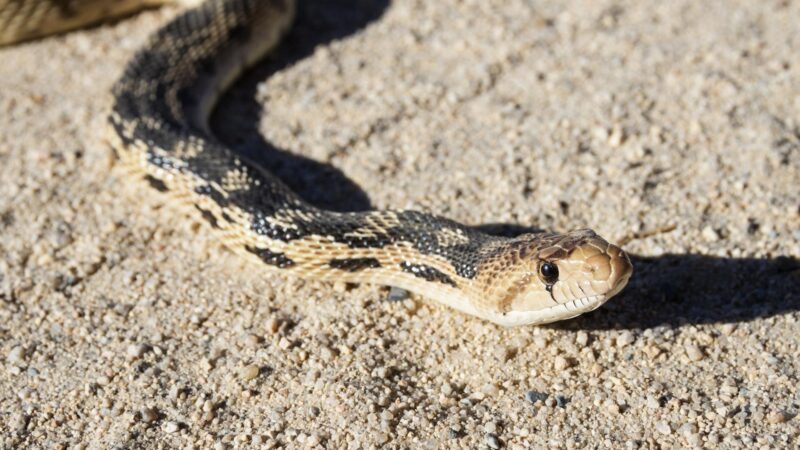
Gopher snakes are also referred to as constrictor snakes, which means that they can prey on larger animals. In a study from the University of Tennessee, constriction is defined as the snakes’ prey restraint behavior.
These snakes would often consume small animals and surprisingly capture and consume larger prey compared to their body mass.
Unlike other species, gopher snakes are oviparous, so they don’t lay eggs. They need 65 to 75 incubation days to give birth to the young ones. Gopher snakes showcase indeterminate growth.
In the first three years of their lives, they grow quickly, but they will suddenly stop being in their mature form.
What Do Gopher Snakes Look Like?
The average and common length of gopher snakes is four feet, but some can grow up to nine feet. Comparing them with other snakes of the same length, they have larger eyes and heads but narrower necks.
Gopher snakes have black and brown blotches with a lighter color of gray or yellow behind them. Colors vary in every region, and some mimic the vegetation where they dwell. Some may have stripes, and they’re even albino ones.
There’s a white or yellow color on their ventral part, which can be sometimes dark. A line on their face crosses from behind their eyes to the jaw’s angle. Around 27 to 37 scale rows are arranged in their mid-bodies. They have one anal scale and some keeled scales.
Are Gopher Snakes Dangerous?
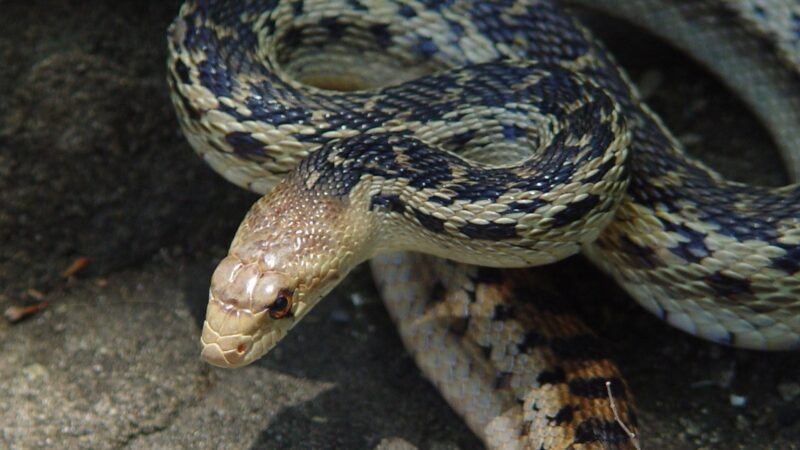
Gopher snakes are not venomous or poisonous. They can still be dangerous as they can bite, and you can feel pain from them. This is done for defense, so better not get near or even chase it.
Another reason why gopher snakes can be dangerous is that they are hosts to chiggers, fleas, and ticks. These tiny creatures can cause skin problems and diseases to both humans and pets.
Related: How to Get Rid of Timber Rattlesnakes | Effective Methods to Ensure Safety
How Do I Identify a Gopher Snake?
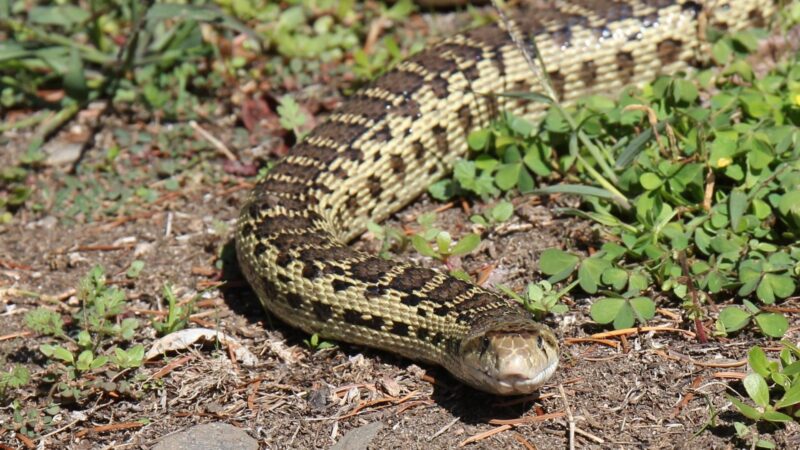
You can identify a gopher snake by its large and heavy body. Most sections of the body are dark, and the underside is in light colors. They create a diamond-like pattern that is similar to a rattlesnake.
When the gopher snake coils, it also vibrates its tail like a rattlesnake. You should be aware that these are the signs that this snake might attack you.
Can a Gopher Snake Hurt You?
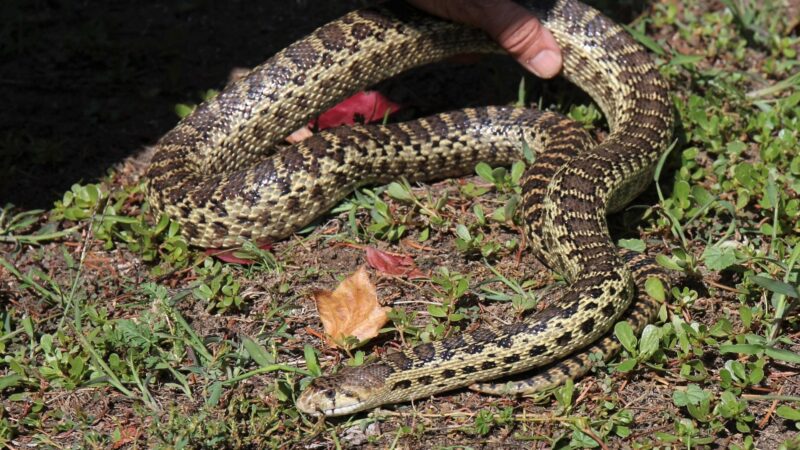
Because of self-defense, a gopher snake can hurt you by biting. It can be painful depending on the snake’s size. On the brighter side, it won’t put your life on the line.
What Attracts Gophers to Your Yard?
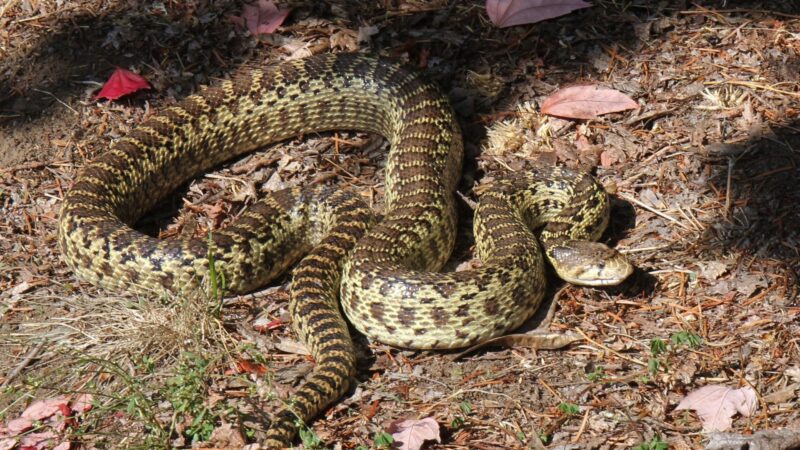
Gophers are attracted to your yard because of the vegetation and dry leaves or grass. They prefer to stay in these areas. Another reason that they’re drawn to your yard is that their food sources hide in there.
These snakes make rodents and other small mammals their meals. When they’re in your yard, they’re probably on food hunting.
What Attracts Snakes to Your House?
Snakes are attracted to your house because of food resources, foraging areas, and hiding places. They would seek shelter that is cool and damp during the warm period.
A pile of wood that is near your house or touches the wall of your house is an ideal home for snakes.
Related: How to Get Rid of Cottonmouth Snakes? | Effective Techniques and Safety Tips
Do Gopher Snakes Look Like Rattlesnakes?
Gopher snakes may look like rattlesnakes due to the similar back pattern. However, you can tell them apart if you look closely.
Although gopher snakes also rattle their tails, they have thinner tails than rattlesnakes. The rattle on the former’s tail is always present unless it’s broken.
The head of the gopher snake is narrow, while it’s triangular for the rattlesnake. The former has round pupils, while the latter has vertical or slit-like pupils.
Gophers have round noses, while the rattlesnakes have upturned ones. Rattlesnakes have fangs and pits, while gopher snakes don’t.
Do Gopher Snakes Keep Rattlesnakes Away?
Gopher snakes keep rattlesnakes away as they prey on them.
Can Gopher Snakes Climb Walls?
Gopher snakes can climb walls. Hence, they can get into your yard and house.
Are Gopher Snakes the Same as Garter Snakes?
Gopher snakes and garter snakes can be the same when it comes to being harmless snakes without the capacity to deliver poison or venom.
It’s just that the bite of garter snakes can cause an allergic reaction, but it rarely happens. Several features make these two species distinct from each other, and they are as follows:
Appearance
Gophers have blotches, while garter snakes have stripes on their bodies. The difference is obvious when you refer to their sizes. The former can grow up to 275 cm, while the latter’s longest frame is only 137 cm.
Reproduction
While gophers lay eggs, garter snakes engage in a live birth.
Habitat
Gopher snakes have a wide range of habitats like chaparral, prairies, woodlands, shrublands, deserts, and agricultural areas. On the other hand, garter snakes are quite adaptable to extreme environmental conditions.
They feel the most comfortable in grassland, but they dwell in various kinds of habitats. You’ll likely see them on the edges of streams, lakes, ponds, and ditches. They can also be found in woodlands, hillsides, marshes, and meadows.
Diet and Preying Habits
Gopher snakes capture and kill their prey through constriction. They feed on insects, birds, smaller snakes, lizards, eggs, and small mammals. Garter snakes catch their prey in various ways, such as ambushing, craning, and peering.
They’re agile in sinking their sharp teeth into their prey’s bodies. The saliva of these snakes is slightly toxic, so they handle their prey with ease.
Garter snakes are also interested in the gophers’ prey, like other snakes, insects, small mammals, and lizards. But they’re also after slugs, amphibians, earthworms, slugs, leeches, snails, small fish, and crayfish.
Beneficial to Humans
Apart from being harmless, these snakes can be beneficial to humans. Gopher snakes can help farmers control rodents that destroy their crops. Garter snakes also control the pests in your gardens, like mollusks and insects.
What Do You Do if You See a Gopher Snake?
Although you’ll be scared to see a gopher snake, distance yourself from it as it means no harm. It will only strike once it’s threatened by your presence. Let the snake do its job in eliminating pests on farms. Some people even choose it as their pet.
How Do You Get Rid of Gopher Snakes?
No repellents or chemical control are legalized by the government as of the present. So, you can rely on traps to get rid of gopher snakes. You don’t have to kill them. Instead, you only need to take them out of your house or yard. Here’s what you can do:
Cloth
This is the option if you want to get rid of gopher snakes inside your house. You can capture snakes by using damp, rumpled cloth that creates a dark, cool, damp place that they like.
But you have to cover it with the dry one so evaporation won’t be so quick. If you find a gopher snake curling up on it, you can use a pitchfork or scoop shovel to pick it up, together with the cloth.
Glue Board
This is the trap to put outdoors to get rid of gopher snakes. Glue or connect two or four pieces of glue boards. You’ll need to drill a hole in the corner once the boards are established. The hole is where you insert the rope or pole.
After preparing the board as a whole, place it on the open section of the wall, as it’s where the snake will likely pass. Once the snake gets into the trap, take it out and pour out regular oil on it so it can be free to go.
Related: Best Natural Snake Repellents: A Complete Guide
Can You Keep A Gopher Snake As A Pet?
Gopher snakes make wonderful pets for beginners and kids since they are interesting to watch and relatively easy to take care of. They don’t often bite and are relaxed. Here are some recommendations if you decide to keep a pet gopher snake.
Lighting and Temperature
They do require conditions of 85 °F during the day and 75 °F at night. To reach these temperatures, a thermostat and an under-tank heating mat are used. Get one specifically designed for snakes.
Spacious Terrarium
Although gopher snakes are active, they are not quite as aggressive as corn snakes. They still require a lot of room, though! For infants, a 10-gallon container is adequate, while an adult needs a 50-gallon container.
Give them a place to hide and a selection of things to climb and play on. The snake will benefit from this and it will be entertaining to watch it explore its environment while doing so.
Food and Water
Your gopher snake will consume rodents. Only around once every seven days will they need to be fed. This is especially helpful if your schedule is busy. The main source of nourishment for these predators is frozen mice that recently defrosted.
Water is likewise essential. Snakes must consume enough water to maintain good health.
Commitment
When caring for a pet gopher snake, dedication is essential. They have been known to live up to 33 years in captivity and can endure for up to 15 years in the wild.
List of Sources
Albert, J. (2008). Pituophis catenifer. Animal Diversity Web.
Mehta, R. S. (2005). Constriction Behavior, a Key Innovation In Snake Evolution: The Integration of Ethology and Physiology. University of Tennessee.
Burger, L. M. (2020). Reducing Snake Problems Around Homes. Mississippi State University.
Zimmerman, R. (2013). Thamnophis sirtalis. Animal Diversity Web.
- Bed Bug Surge 2025: How to Detect, Prevent, and Safely Eliminate Infestations in Top U.S. Cities - June 18, 2025
- Asian Needle Ants Invade US Homes: 2025 Guide to Identification, Risks, and Effective Control - June 11, 2025
- New World Screwworm Alert: How US Livestock Owners Can Prevent Outbreaks and Protect Herds [Summer 2025 Update] - June 8, 2025

